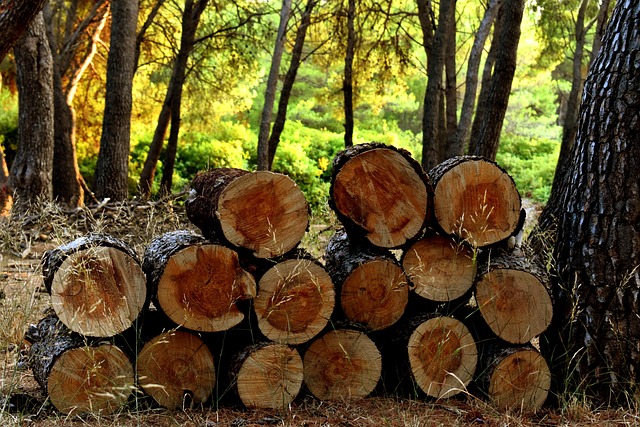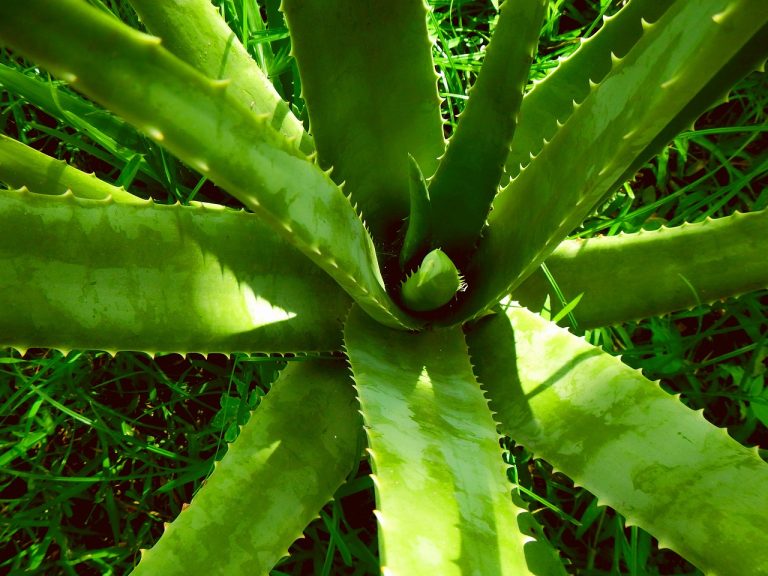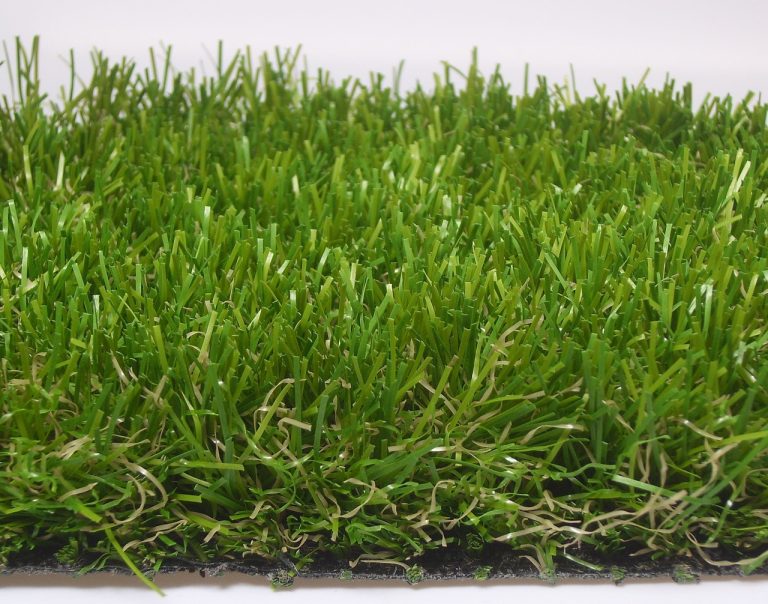What Kills Bermuda Grass (6 SECRETS THAT AMAZES YOU )
In the verdant realm of lawn care, Bermuda grass stands as a symbol of resilience and lush green perfection. Yet, beneath its vibrant surface, a silent battle rages, a battle against the forces of nature and human missteps. Like a captivating mystery novel, the question of “What Kills Bermuda Grass” unravels the intricate web of factors, from mischievous pests to well-intentioned gardening enthusiasts, all seeking to unravel the secret behind the demise of this enduring, emerald-hued marvel. So, let’s embark on a horticultural journey, exploring the hidden culprits, unraveling the enigma, and discovering the keys to safeguarding this botanical wonder.
WHAT KILLS BERMUDA GRASS?
Bermuda grass, known for its resilience and adaptability, can fall victim to various factors that hinder its growth. Inadequate water supply, often due to drought conditions or inconsistent irrigation, is a primary culprit in weakening Bermuda grass.Pests, such as army worms or grubs, can devastate its health, leading to yellowing and thinning of the turf.
Additionally, excessive thatch buildup, a dense layer of dead grass and roots, can smother Bermuda grass, impeding its growth. Weeds, like crabgrass and dandelions, can also encroach on Bermuda grass territory, competing for nutrients and sunlight. Poor soil quality, lacking essential nutrients, can further jeopardize its vitality. These are common issues people encounter when addressing the challenges that threaten Bermuda grass.
UNDERSTANDING THE BERMUDA GRASS NEMESIS
Bermuda grass (Cynodon dactylon) is a warm-season grass that is both admired for its lush appearance in lawns and dreaded for its invasive nature. Here are some key reasons why it can be a gardener’s nemesis:
AGGRESSIVE GROWTH:
Bermuda grass is known for its aggressive and rapid growth. It spreads via above-ground stolons and below-ground rhizomes, allowing it to establish new growth from both seeds and the underground root system.
DROUGHT RESISTANCE:
One of the most significant challenges in dealing with Bermuda grass is its remarkable drought resistance. It can survive extended periods of drought, making it a formidable opponent in regions with water scarcity.
HEAT TOLERANCE:
Bermuda grass thrives in hot climates and can withstand high temperatures, which makes it particularly stubborn during the summer months. It goes dormant in winter but rebounds quickly when the temperature rises.
FULL SUN PREFERENCE:
Bermuda grass prefers full sun and can outcompete many other grass species in sunny areas. It can grow vigorously even in areas where other grasses struggle.
VERSATILE SOIL ADAPTATION:
It’s adaptable to a wide range of soil types, from sandy to clay soils. This versatility in soil adaptation allows it to establish itself in various environments.
RESILIENCE:
Even if you manage to kill the visible parts of Bermuda grass, its rhizomes can remain underground and re-sprout when conditions are favorable. This makes complete eradication a long and challenging process.
SEED PRODUCTION:
Bermuda grass produces a large number of seeds, further promoting its spread. Birds, wind, or even lawn equipment can inadvertently spread these seeds to new areas.
CHEMICAL WARFARE: HERBICIDES AND BERMUDA GRASS
Herbicides are a common tool for managing Bermuda grass. They can be effective in preventing its growth or eliminating established plants. Here are the types of herbicides and their application techniques for dealing with Bermuda grass:
PRE-EMERGENT HERBICIDES:
TIMING:
Pre-emergent herbicides should be applied before Bermuda grass seeds germinate, typically in late winter or early spring when soil temperatures reach the right range for germination (around 50-55°F or 10-13°C). Timing is crucial, so check local conditions.
ACTIVE INGREDIENTS:
Common pre-emergent herbicides for Bermuda grass include products containing active ingredients like dithiopyr, prodiamine, or pendimethalin.
APPLICATION TECHNIQUE:
Apply the pre-emergent herbicide evenly over the area where you want to prevent Bermuda grass. Follow the manufacturer’s instructions for rates and application methods. Water the area thoroughly after application to activate the herbicide.
POST-EMERGENT HERBICIDES:
TIMING:
Post-emergent herbicides are applied to actively growing Bermuda grass during its peak growth period, which is usually in the summer. Make sure you identify the grass correctly before applying.
ACTIVE INGREDIENTS:
Common post-emergent herbicides for Bermuda grass include those containing active ingredients like glyphosate, fluazifop-p-butyl, or clethodim. Selective herbicides are best to avoid harming desirable plants nearby.
APPLICATION TECHNIQUE:
Spray or apply the post-emergent herbicide directly to the Bermuda grass while avoiding contact with other desirable plants. Be careful not to overspray onto other vegetation. Follow the product label for recommended rates and safety instructions.
REPEAT APPLICATIONS:
Bermuda grass can be resilient, and multiple herbicide applications may be necessary for complete eradication. Follow-up treatments may be needed in subsequent seasons, especially if Bermuda grass has an extensive root system.
SAFETY PRECAUTIONS:
Always wear appropriate protective gear, including gloves and safety goggles, when handling herbicides.
Be cautious with herbicide overspray to prevent unintended damage to nearby plants.
Follow the manufacturer’s instructions regarding mixing ratios, application rates, and safety precautions.
PROFESSIONAL HELP:
If you find managing Bermuda grass with herbicides challenging, or if you have a large infestation, consider seeking professional lawn care services or a landscape specialist who can provide expert guidance and treatment.
SOLAR ASSASSINATION: KILLING BERMUDA GRASS WITH SUNLIGHT
Using sunlight as a natural tool to weaken Bermuda grass, which thrives in full sunlight, is an effective and environmentally friendly approach. You can shade your lawn to reduce sunlight and encourage the grass to weaken and eventually die. Here are some techniques for utilizing this method:
MULCH OR ORGANIC MATERIAL:
TECHNIQUE:
Apply a thick layer of organic mulch, such as wood chips, straw, or compost, over the Bermuda grass-infested area. This effectively shades the grass and deprives it of sunlight.
TIMING:
Best done in late spring or early summer when the grass is actively growing and most in need of sunlight.
MAINTENANCE:
Keep the mulch layer consistently thick to prevent Bermuda grass from re-emerging. Regularly top it up to maintain the shade.
SHADE CLOTH:
TECHNIQUE:
Install shade cloth or shade fabric over the affected area. Shade cloth comes in various degrees of shading, so you can choose the appropriate level to limit sunlight while still allowing some light to reach other desirable plants.
TIMING:
Install the shade cloth during the growing season, usually in spring or early summer.
MAINTENANCE:
Check the shade cloth periodically to ensure it’s securely in place and adjust it as needed to provide continuous shade.
PLANTING TREES OR SHRUBS:
TECHNIQUE:
Plant trees or shrubs strategically to cast shade over the Bermuda grass-infested area. Deciduous trees, which drop their leaves in winter, are an excellent choice as they provide shade in the growing season and allow sunlight through in the dormant season.
TIMING:
Plant trees or shrubs in the fall or early spring to allow them to establish themselves before providing significant shade.
MAINTENANCE:
Prune trees or shrubs as needed to maintain the shade and prevent them from overshadowing desirable plants nearby.
LANDSCAPE DESIGN:
TECHNIQUE:
Redesign your landscape to include hardscape elements like patios, walkways, or decorative rocks in areas where Bermuda grass is a problem. These elements will naturally shade the ground and discourage grass growth.
TIMING:
Can be implemented at any time of the year.
GROUND COVERS:
TECHNIQUE:
Plant shade-tolerant ground cover plants in the Bermuda grass-prone areas. These plants will naturally create shade and outcompete the grass.
TIMING:
Plant ground covers in the appropriate season for the selected plants.
DIGGING DEEP: PHYSICAL REMOVAL METHODS
Physical removal methods can be highly effective in battling Bermuda grass, especially when used in combination with other control strategies. Here are some manual labor techniques for getting rid of Bermuda grass:
HAND DIGGING:
TECHNIQUE:
Use a garden spade or shovel to dig up the Bermuda grass, including its root system. Try to remove as much of the root and underground rhizomes as possible.
TIMING:
This method can be employed throughout the year but is often most effective during the growing season when the grass is actively growing and easier to identify.
MAINTENANCE:
Regularly inspect the area for regrowth and continue digging out any new shoots or rhizomes.
TILLING:
TECHNIQUE:
Use a garden tiller or rototiller to turn over the soil in the affected area. This not only buries existing Bermuda grass but also disrupts its rhizomes and stolons, which can hinder its ability to reestablish.
TIMING:
Tilling is most effective in the spring or fall when the grass is actively growing. Be cautious not to disturb desirable plants or vegetation nearby.
SOD CUTTER:
TECHNIQUE:
A sod cutter is a specialized tool designed to cut and remove the top layer of soil and grass, including Bermuda grass, in strips or sections. It provides a more efficient way to remove large areas of grass.
TIMING:
Sod cutting can be done when the grass is actively growing, typically in the warm months.
MAINTENANCE:
After using a sod cutter, you may need to manually remove any remaining patches or rhizomes and prepare the area for re-seeding or planting.
REPEATING THE PROCESS:
Regardless of the method used, you may need to repeat the process over time as Bermuda grass is persistent and can regrow from remaining rhizomes. Consistency is key to achieving long-term control.
DISPOSAL:
Properly dispose of the removed Bermuda grass, especially the rhizomes, to prevent them from spreading or re-growing. Composting may not be advisable for Bermuda grass, as it can survive the composting process.
MOWING AND BAGGING:
Regularly mow the Bermuda grass as short as possible, bagging the clippings. This can help weaken the grass over time by reducing its energy reserves.
SHEET MULCHING:
After removing the grass, consider implementing sheet mulching, which involves layering cardboard or newspaper over the area, followed by mulch or soil. This smothers any remaining Bermuda grass and prevents its return.
FOE TO FRIEND: CONVERTING BERMUDA GRASS TO A DIFFERENT GRASS VARIETY
Converting Bermuda grass into a different, more desirable grass variety can be an effective way to transform your lawn or garden. Here are the steps involved in this process:
SOIL PREPARATION:
TEST THE SOIL:
Before you begin, it’s essential to test the soil to determine its pH, nutrient levels, and overall health. Different grass varieties have specific soil requirements, and the results of the soil test will guide your soil preparation.
AMEND THE SOIL:
Based on the soil test results, you may need to amend the soil to create the right conditions for the new grass variety. Common soil amendments include adding organic matter (compost), lime to adjust pH, and fertilizers to improve nutrient levels.
THINNING BERMUDA GRASS:
MOW LOW:
Start by mowing the Bermuda grass as low as possible. This helps reduce the competition between Bermuda grass and the new grass seeds.
SCALPING:
In some cases, you might need to scalp the lawn more aggressively, using a dethatcher or sod cutter to remove much of the existing Bermuda grass.
WEED REMOVAL:
Hand-remove any remaining weeds or unwanted grass patches that are not Bermuda grass.
GRASS OVERSPEEDING:
Select the New Grass Variety: Choose a grass variety that is well-suited to your local climate and meets your aesthetic and maintenance preferences. Common choices include Kentucky bluegrass, fescue, or perennial ryegrass.
OVERSPEEDING:
Broadcast the new grass seeds evenly over the prepared soil. Follow the recommended seeding rates on the seed packaging.
COVER SEEDS:
Lightly rake the soil to cover the new grass seeds. You can also use a thin layer of straw or mulch to help retain moisture and protect the seeds.
WATERING:
Keep the newly overseeded area consistently moist during the germination period, which typically lasts about 2-3 weeks. Be careful not to overwater or allow the soil to dry out.
MAINTENANCE:
FERTILIZE:
Apply a balanced, slow-release fertilizer to provide essential nutrients for both the Bermuda grass and the new grass variety.
MOWING AND TRIMMING:
Mow the grass at the recommended height for the new grass variety. Be sure to avoid scalping, which can damage the new grass.
WEED CONTROL:
Keep an eye out for weeds and promptly remove them to prevent them from competing with the new grass.
REGULAR WATERING:
Maintain proper watering practices to ensure the new grass establishes well.
PATIENCE:
Understand that the transition from Bermuda grass to a new variety may take some time. Be patient and continue to nurture the new grass as it establishes itself.
ONGOING VIGILANCE: MAINTAINING A BERMUDA GRASS-FREE LAWN
Maintaining a Bermuda grass-free lawn requires ongoing vigilance and a combination of strategies to prevent its return. Here are some long-term maintenance strategies to ensure your lawn remains Bermuda grass-free:
REGULAR INSPECTIONS:
Continuously monitor your lawn for any signs of Bermuda grass regrowth or infestation. Early detection allows for prompt action.
PROPER LAWN CARE:
MOWING:
Maintain the grass at the recommended height for your chosen grass variety, ensuring it’s neither too short nor too tall. This can help prevent Bermuda grass from outcompeting other grasses.
WATERING:
Provide your lawn with appropriate and consistent watering to help the desired grass variety thrive. Avoid overwatering, which can create favorable conditions for Bermuda grass.
FERTILIZATION:
Apply fertilizers as needed, following soil test recommendations. Healthy grass is more resistant to weed infestations.
REGULAR MAINTENANCE:
WEED CONTROL:
Keep a watchful eye for any Bermuda grass or other weeds and promptly remove them by hand.
AERATION:
Periodic aeration can help improve soil quality and reduce the risk of weed infestations.
DETHATCHING:
If thatch buildup becomes a problem, dethatching your lawn can create an environment less conducive to Bermuda grass.
AVOIDING OVERSEEDING:
Be cautious about overseeding your lawn with Bermuda grass or other grasses that may introduce it again.
CORRECT MOWING TECHNIQUES:
Keep your mower blades sharp to avoid stressing the grass and making it more vulnerable to invasive species like Bermuda grass.
MULCHING AND SHADE:
Continue using mulch or shade cloth in areas where Bermuda grass was a problem to prevent its return.
REGULAR SOIL TESTING:
Periodic soil testing can help you maintain the right soil conditions for your chosen grass variety. Adjust soil amendments and pH as needed.
CONSISTENT VIGILANCE:
Keep a consistent schedule for lawn maintenance, including mowing, watering, and weeding. Regular care helps maintain a healthy lawn.
PROFESSIONAL ASSISTANCE:
If Bermuda grass continues to be a persistent problem, consider seeking professional lawn care services or a landscape specialist who can provide expert guidance and treatment.
EDUCATION AND KNOWLEDGE:
Stay informed about effective weed control methods and grass care practices. Being knowledgeable about the specifics of your lawn’s needs is essential in maintaining a Bermuda grass-free lawn.
Frequently Asked Questions (FAQ) about what kills Bermuda grass:
What is Bermuda grass, and why do people want to kill it?
Bermuda grass is a common warm-season turfgrass used in lawns and sports fields. People may want to kill it when it becomes invasive, takes over other grasses, or when they want to replace it with a different type of grass.
What are the most common methods to kill Bermuda grass?
Common methods to kill Bermuda grass include herbicides, manual removal, solarization, and tarping.
What herbicides can effectively kill Bermuda grass?
Herbicides like glyphosate, imazapyr, and fluazifop are effective for killing Bermuda grass. However, be cautious as some of these chemicals can harm other plants.
Is there an organic or non-chemical method to kill Bermuda grass?
Yes, you can use organic methods such as smothering with mulch, solarization (using plastic to trap heat), or regular mowing and removing clippings to weaken the grass.
When is the best time to kill Bermuda grass?
The best time to kill Bermuda grass is during its active growth season, which is in late spring or early summer for warm climates. This is when it’s most susceptible to herbicides and other control methods.
Can I simply pull Bermuda grass out by hand to get rid of it?
Pulling Bermuda grass by hand can be effective, but it’s labor-intensive because of its extensive root system. It’s often better to combine hand-pulling with other control methods.
Can I reseed or plant another type of grass after killing Bermuda grass?
Yes, you can reseed or plant a different grass type after killing Bermuda grass. It’s important to prepare the soil properly and follow the recommended procedures for your chosen grass species.
How long does it take to completely kill Bermuda grass using herbicides?
The time it takes to kill Bermuda grass with herbicides can vary depending on the product, application, and environmental conditions. It may take a few weeks to a few months for complete eradication.
Are there any natural predators or diseases that can help kill Bermuda grass?
While some insects and diseases can affect Bermuda grass, they are not reliable control methods. Using these natural factors is not a common strategy for Bermuda grass control.
What steps can I take to prevent Bermuda grass from returning after killing it?
Preventing Bermuda grass from returning involves proper lawn maintenance, improving soil health, and vigilant monitoring. Regular mowing, overseeding with preferred grass types, and spot-treating regrowth can help keep it at bay.
CONCLUSION
The factors that can spell doom for Bermuda grass are multifaceted. This resilient warm-season grass can be vulnerable to various stressors, including excessive shade, poor soil quality, inadequate irrigation, and the presence of aggressive weeds. Additionally, extreme weather conditions, such as harsh winters or prolonged droughts, can also take their toll on Bermuda grass. Effective management practices, such as proper mowing, fertilization, and pest control, are crucial for its survival. Understanding the potential threats to Bermuda grass and implementing proactive measures can help ensure its health and vitality, allowing it to thrive and create lush, green lawns in suitable environments.








